Details
Description
SKU: CF.SPS85F
Composed by Jeremy Martin. Sws. Sps. Full score. 44 pages. Duration 7 minutes, 8 seconds. Carl Fischer Music #SPS85F. Published by Carl Fischer Music (CF.SPS85F).ISBN 9781491156438. UPC: 680160914975. 9 x 12 inches.
Blue Horizons is a spirited tribute to the musical heritage of the United States Air Force. The main theme is a variation of the U.S. Air Force Song (Off We Go), with a secondary theme based on A Toast to the Host (the bridge of The Air Force Song). Throughout the work, fragments of other Air Force-related songs appear: Lord, Guard and Guide (the Air Force Hymn), Air Force Blue, and Those Magnificent Men in Their Flying Machines. The original request for this work was a daunting task: I was asked to create an Air Force "companion piece" to Robert Jager's Esprit de Corps that would mirror the style and spirit of that landmark work. The goal was to use elements of our various Air Force tunes in the same way that Jager incorporated The Marine's Hymn into his work - that is, to weave a musical tapestry of the Air Force's musical heritage without ever becoming a mere arrangement of the original material. As a former student of Robert Jager at Tennessee Technological University, I discussed my plans for the piece with him, shared my progress along the way, and sought his guidance as I had done so many times in the past. He was delighted that I managed to incorporate a few "Jager-isms" into the music, including one direct quote from Esprit de Corps. Although Blue Horizons was conceived as a dedication to the Air Force's musical legacy, it is also a personal homage to my teacher and friend, Robert Jager. Performance Notes * If only two flutists are available, omit the piccolo part and have them play Flute 1 and 2; in this case, Flute 1 should switch over to piccolo (still playing from the Flute 1 part) at m. 81 and back to regular flute at m. 114. If only covering the Flute 1 and 2 parts, Flute 2 should ignore indications to switch to piccolo and just play the entire work on regular flute. * Oboe 1 and 2 parts should be covered before adding the English Horn part. * The clarinet in Eb part should not be covered unless there are a sufficient number of players on the clarinet in Bb parts. * The trumpet cues in mm. 77-80 are only necessary if the horns need assistance finishing their soli phrase with enough strength to be heard. If you can hear them without extra support, leave the trumpets out. * From mm. 89-95, be sure the wind players with static eighth notes do not cover up the players with moving lines. * There is a strong tendency to rush m. 121. * During the oboe solo from mm. 157-168, ensure that the suspension/resolution lines in the bassoon and clarinet parts are heard; emphasize the importance of growing into the suspension with a slight crescendo. * In the scherzo section that begins at m. 217, be sure that each player knows how his/her part fits into the overall sound. I recommend isolating different textural items so the players can hear those parts on their own. (The bass line from mm. 243-260, for example, or the moving inner-voice line from mm. 251-260.) * In this same scherzo section, care should be taken to not play too loud and save a little strength for the climax fanfare at m. 279. * If you have an abundance of tubas, I would recommend having one or two of them play up an octave from mm. 243-271 if the lower part seems too heavy.
Blue Horizons is a spirited tribute to the musical heritage of the United States Air Force. The main theme is a variation of the U.S. Air Force Song (Off We Go), with a secondary theme based on A Toast to the Host (the bridge of The Air Force Song). Throughout the work, fragments of other Air Force-related songs appear: Lord, Guard and Guide (the Air Force Hymn), Air Force Blue, and Those Magnificent Men in Their Flying Machines.The original request for this work was a daunting task: I was asked to create an Air Force “companion piece” to Robert Jager’s Esprit de Corps that would mirror the style and spirit of that landmark work. The goal was to use elements of our various Air Force tunes in the same way that Jager incorporated The Marine’s Hymn into his work – that is, to weave amusical tapestry of the Air Force’s musical heritage without ever becoming a mere arrangement of the original material. As a former student of Robert Jager at Tennessee Technological University, I discussed my plans for the piece with him, shared my progress along the way, and sought his guidance as I had done so many times in the past. He was delighted that I managed to incorporate a few “Jager-isms” into the music, including one direct quote from Esprit de Corps. Although Blue Horizons was conceived asa dedication to the Air Force’s musical legacy, it is also a personal homage to my teacher and friend, Robert Jager.Performance Notes• If only two flutists are available, omit the piccolo part and have them play Flute 1 and 2; in this case, Flute 1 should switch over to piccolo (still playing from the Flute 1 part) at m. 81 and back to regular flute at m. 114. If only covering the Flute 1 and 2 parts, Flute 2 should ignore indications to switch to piccolo and just play the entire work on regular flute.• Oboe 1 and 2 parts should be covered before adding the English Horn part.• The clarinet in Eb part should not be covered unless there are a sufficient number of players on the clarinet in Bb parts.• The trumpet cues in mm. 77-80 are only necessary if the horns need assistance finishing their soli phrase with enough strength to be heard. If you can hear them without extra support, leave the trumpets out.• From mm. 89-95, be sure the wind players with static eighth notes do not cover up the players with moving lines.• There is a strong tendency to rush m. 121.• During the oboe solo from mm. 157-168, ensure that the suspension/resolution lines in the bassoon and clarinet parts are heard; emphasize the importance of growing into the suspension with a slight crescendo.• In the scherzo section that begins at m. 217, be sure that each player knows how his/her part fits into the overall sound. I recommend isolating different textural items so the players can hear those parts on their own. (The bass line from mm. 243-260, for example, or the moving inner-voice linefrom mm. 251-260.)• In this same scherzo section, care should be taken to not play too loud and save a little strength for the climax fanfare at m. 279.• If you have an abundance of tubas, I would recommend having one or two of them play up an octave from mm. 243-271 if the lower part seems too heavy.
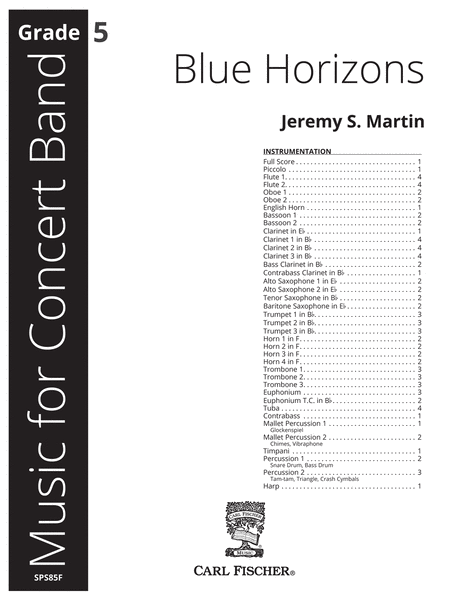
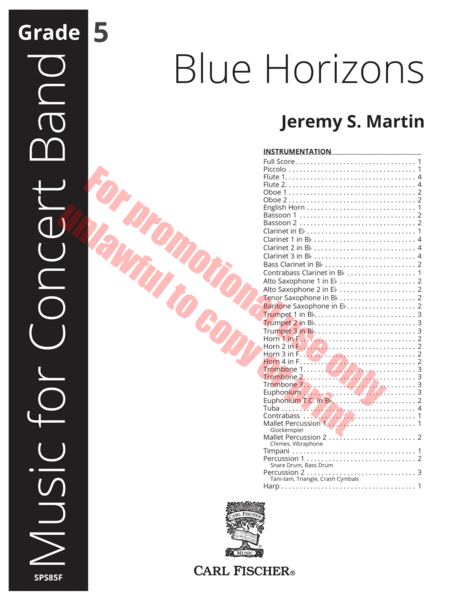
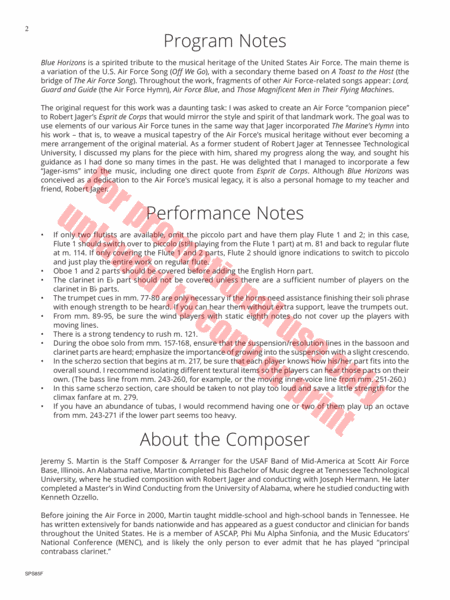
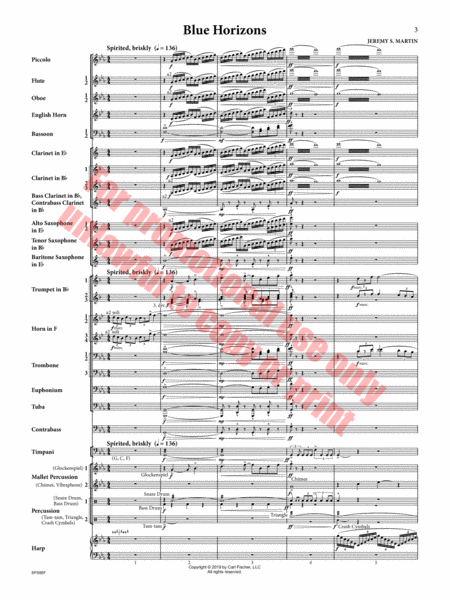
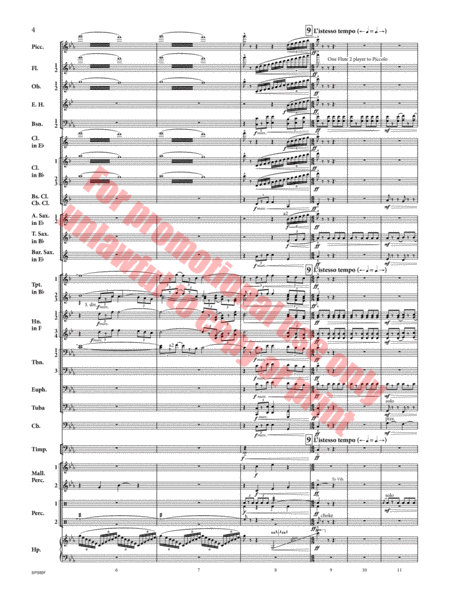
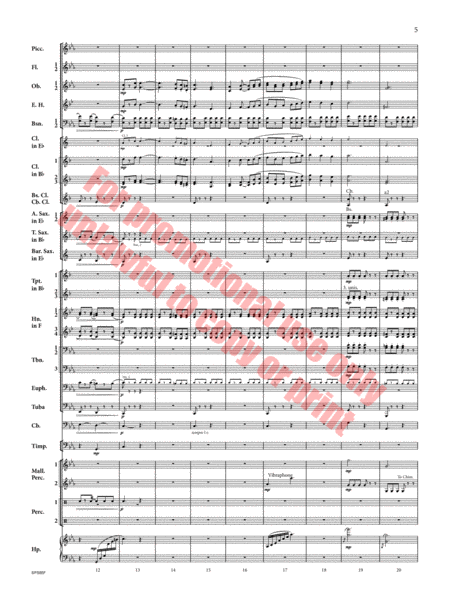
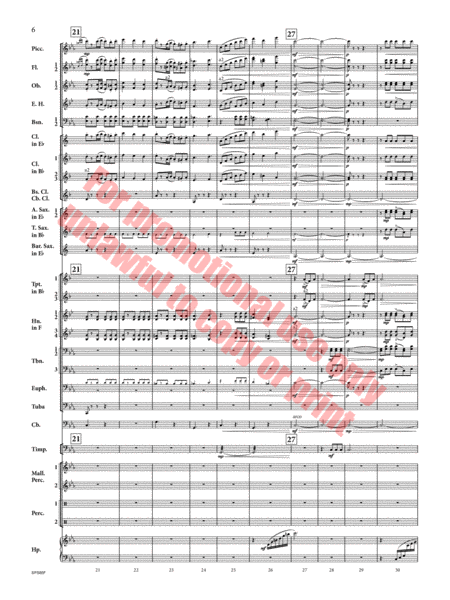
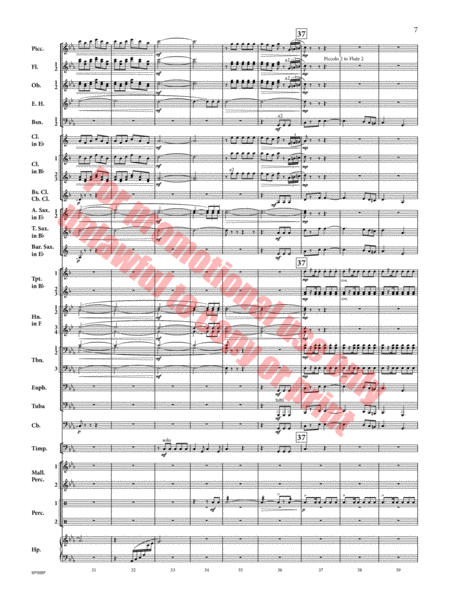
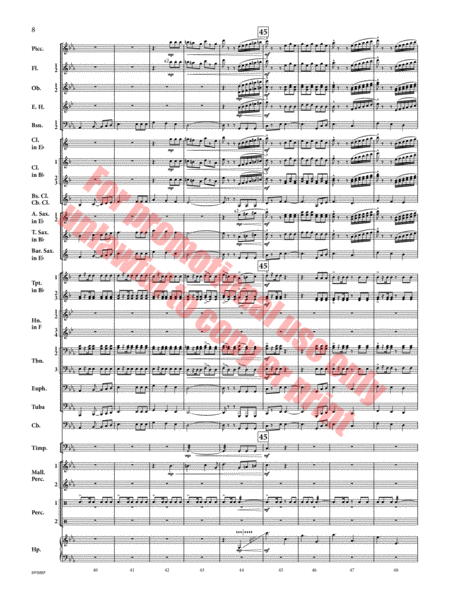
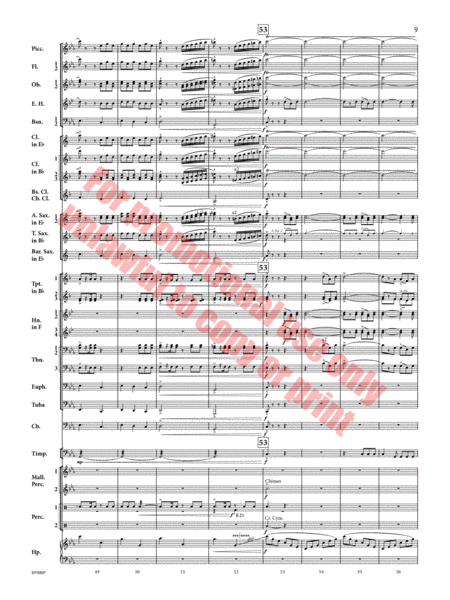
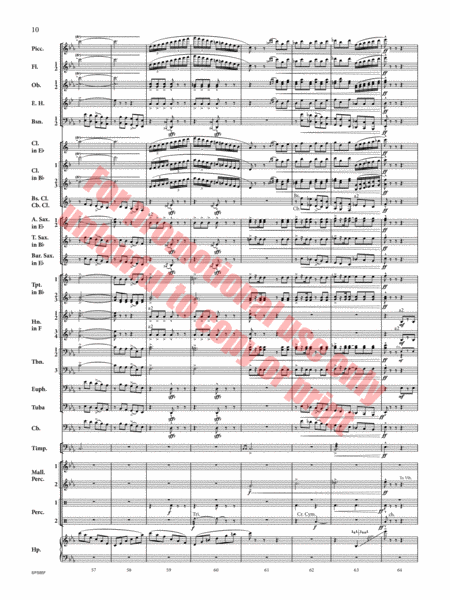
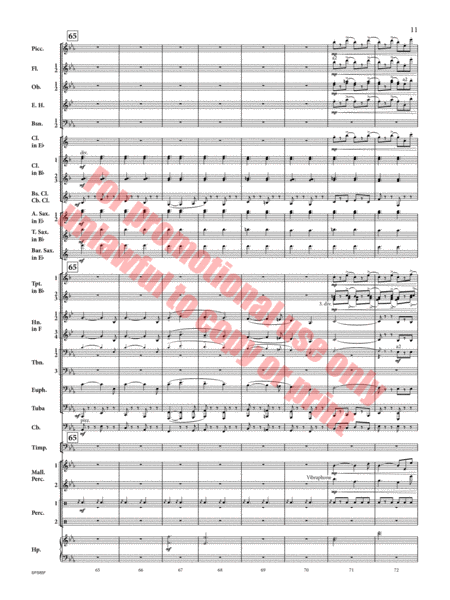
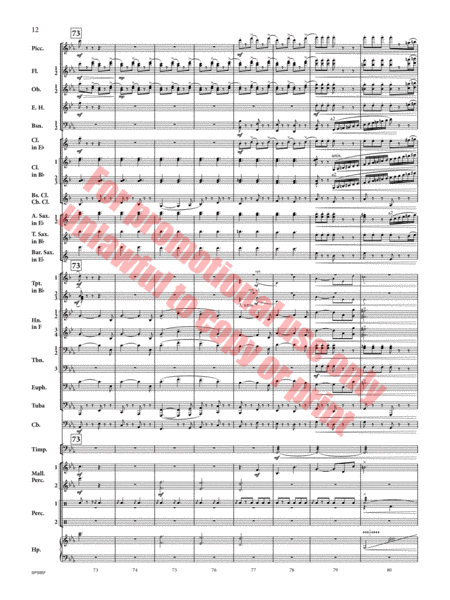
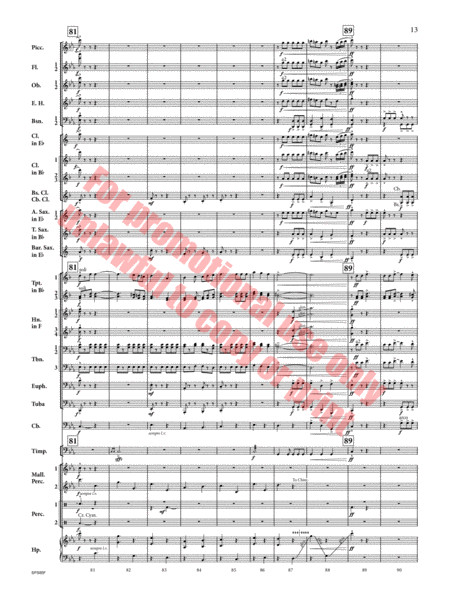
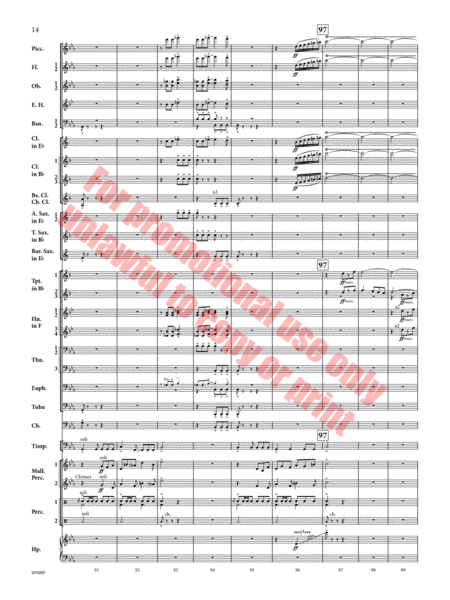
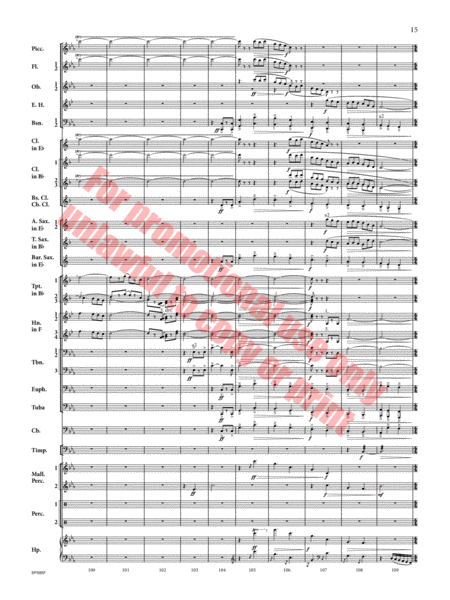
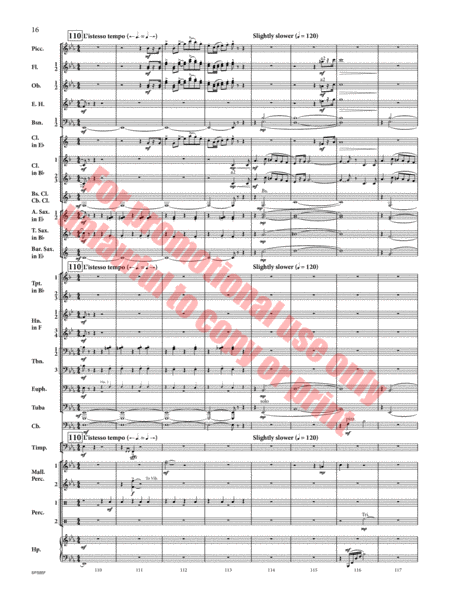
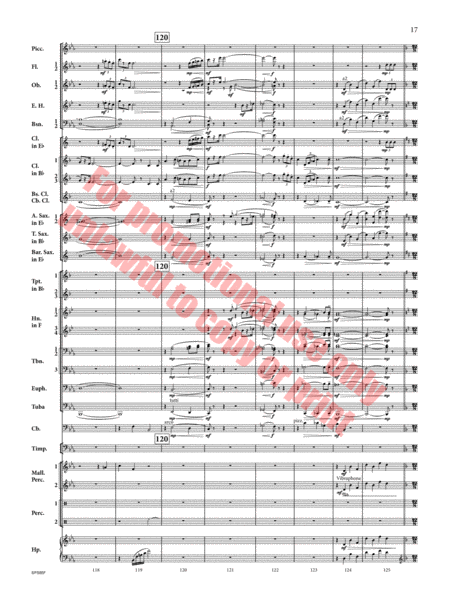
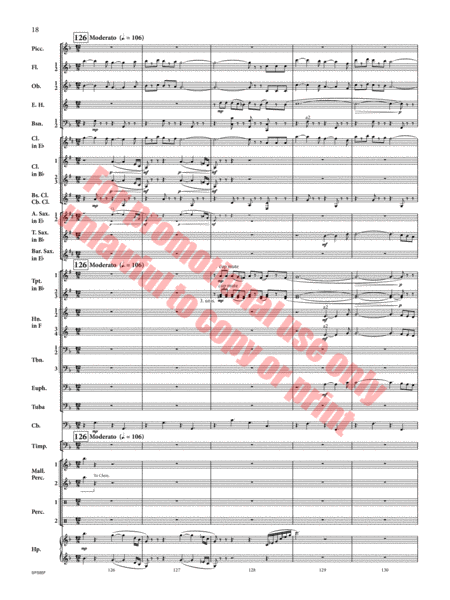
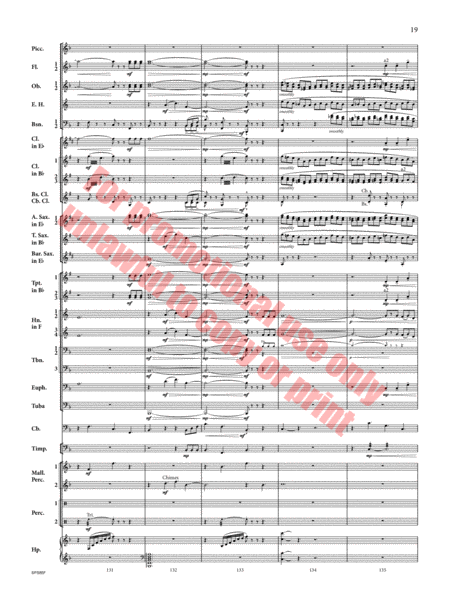
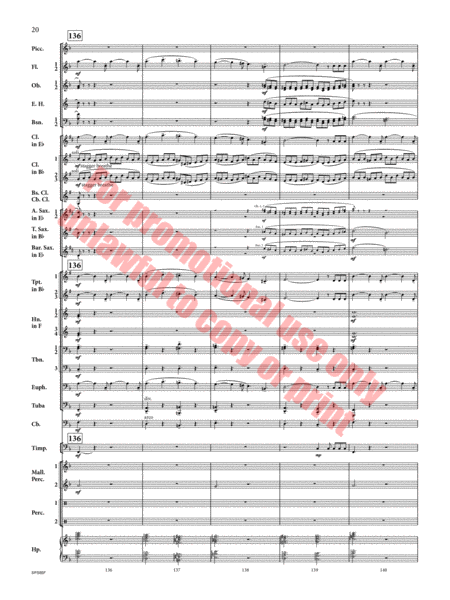
 Share
Share